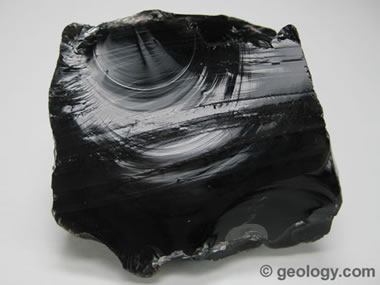Much of the Earth’s surface is covered by rocks. Even the soil where we stand takes its origin from the rocks. From the land to the sea, there are rocks. Everywhere, we see rocks. So what are rocks? What are their classifications? How are they formed?
The Earth’s outer surface, a solid layer called the lithosphere, is made of rocks. Rocks, or stones, are naturally occurring solid aggregates of minerals. They are being constantly formed, worn down, and then formed again in a process known geologically as rock cycle. It is like water cycle except that it takes much longer time, over thousands and millions of years.
Rocks are most commonly classified according to their mineral and chemical composition, texture, and the processes that formed them. With all these considerations, rocks are grouped into igneous, sedimentary, and metamorphic.
Igneous rocks are formed from cooled magma or melt. The magma is composed of various pre-exisitng rocks which have been subjected to melting at subduction zones or within the Earth’s surface. The melt moves upward and eventually cools and hardens into rock in a process known as fractional crystallization. Depending on their location of formation, igneous rocks are categorized either as intrusive or extrusive.
a. Intrusive or plutonic rocks are created when magmas cool and crystallize slowly within the Earth’s crust. An example of this rock is granite. Since granite had cooled very slowly, it is very hard.
b. On the other hand, extrusive or volcanic rocks result when magma reaches the surface as lave or fragmented ejecta and then hardens. Pumice, obsidian, lava rock, and basalt are examples of extrusive rocks. Pumice can float in water since it is full of air pockets that were trapped when the lava cooled when it frothed out onto the surface. Meanwhile, obsidian is called as nature’s glass because it is glassy and smooth.
Igneous rocks can be found at mid-ocean ridges, areas of island arc volcanism, or in intra-plate hotspots.
Sedimentary rocks are formed by the deposition, accumulation and eventual cementation of sediments, and organic matter. As in sand in the shore or mud on a river bed, this material is buried and over time, as more particulates are deposited, it is compacted until it is dense enough to become a rock. This process is called as lithification. Sedimentary rocks can also be formed from evaporation or precipitation from a saturated mineral solution. Based on their composition, sedimentary rocks are classified as organic, clastic, or non-clastic.
b. Clastic sedimentary rocks like conglomerates and shale are formed from any size particle of pre-existing rock. Conglomerate rock has rounded pebbles cemented together in a matrix. Shale, on the other hand, is clay that had been hardened and tuned into rock.
c. Non-clastic or chemical sedimentary rocks result from the evaporation of a saturated mineral solution. Rock gypsum and rock salt are examples of these rocks.
Most of the rocks found on the Earth’s surface are sedimentary even though sedimentary rocks only make up less than 5% of all the rocks that make up Earth. Furthermore, around 65% are classified as mud rocks, such as mudstone, shale and siltstone. Sandstones are from 20 to 25%, and carbonate rocks like limestone and dolostone are 10 to 15%. Sedimentary rocks form at or near the Earth’s surface.
Metamorphic rocks are any rocks, whether igneous or sedimentary, subjected to varying degrees of pressure and temperature conditions which consequently alter their forms. Such pressure and temperature are different from those which the rocks are originally formed and are always higher than at the Earth’s surface. This way, the original minerals of the rock are transformed into other mineral type or else into other forms of the same minerals. There is an alteration on the structure, mineral alignment, or chemical composition as these rocks are squeezed by large pressure or exposed to extreme temperature. Metamorphic rocks are commonly found in areas of mountain building. Examples of metamorphic rocks are slate, quartzite, marble, phyllite, schist, and gneiss.
See what others have to say about "Formation of Rocks: Classification and Process."








Good info., these are all the unexplained laws of nature....
ReplyDeleteشركات نقل عفش بالمدينة المنورة
ReplyDeleteشركات نقل عفش بمكة
شركات نقل عفش
شركة تنظيف خزانات بالمدينة المنورة
شركات تنظيف بمكة
شركة مكافحة حشرات
دون إحداث كسر أو خدش للممتلكات تقوم شركة نقل عفش بمكة بنقل اثاث منزلك الذي تريده.
ReplyDeleteDid you know that you can shorten your long urls with Shortest and receive $$$ from every click on your short links.
ReplyDeleteI love your blog often look to you. Article is good.
ReplyDelete____________________________________________________________________
Sonia Adler - assignment help
Nice article thanks for sharing. Write more - https://papercoach.net/ .
ReplyDeleteThanks for sharing
ReplyDeleteTrong một trận đấu chính thức thì các sư kê phải có kinh nghiệm thật nhiều, để thực hiện đoán được lối đá của gà chọi là rất quan trọng, vì khi chiến kê có hay đến đâu mà gặp thế đá khắc chế lối đá của mình thì sẽ gặp nhiều bất lợi để dành chiến thắng. Có khi còn thất bại nặng nề. Các bạn nhớ đọc bài viết thật kỹ để có được những kiến thức hay về các thế đá gà.
ReplyDeletetruc tiep da ga
Đá gà cựa sắt
Đá gà online
Thank admin !